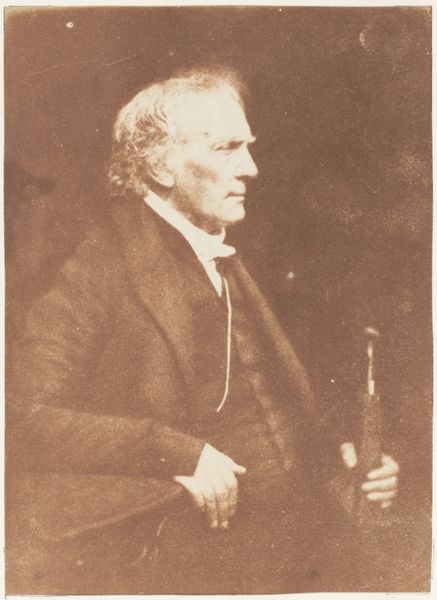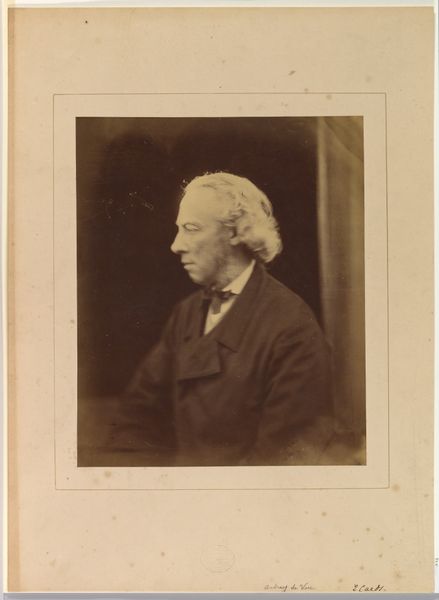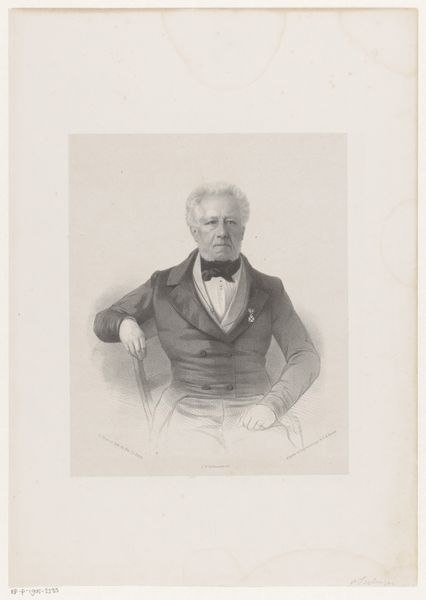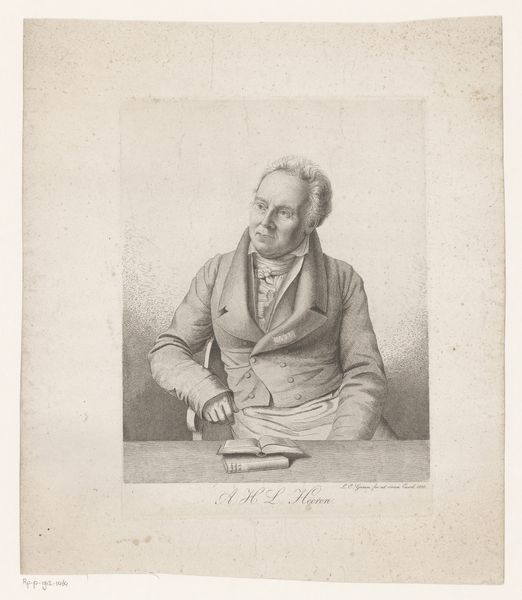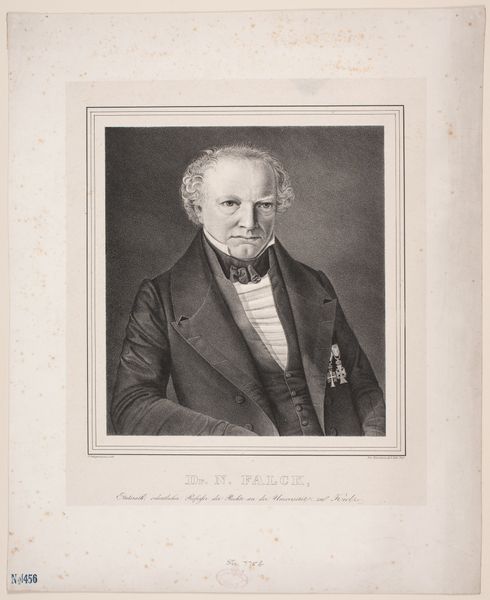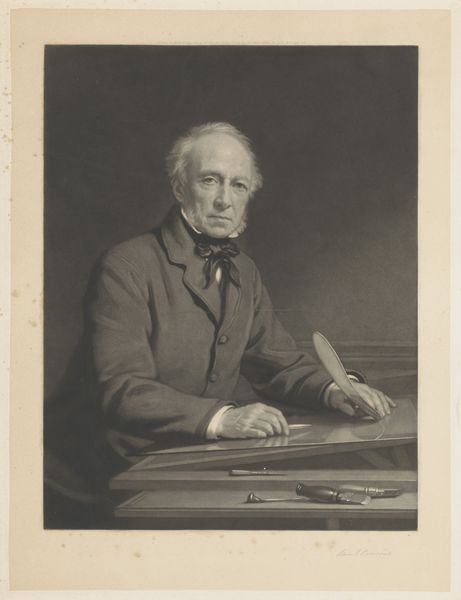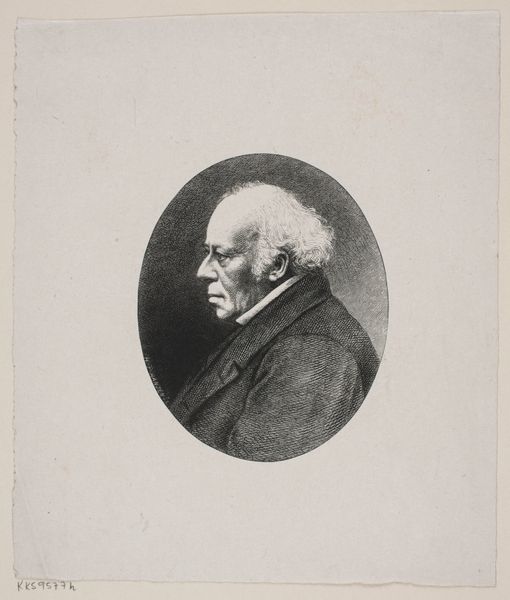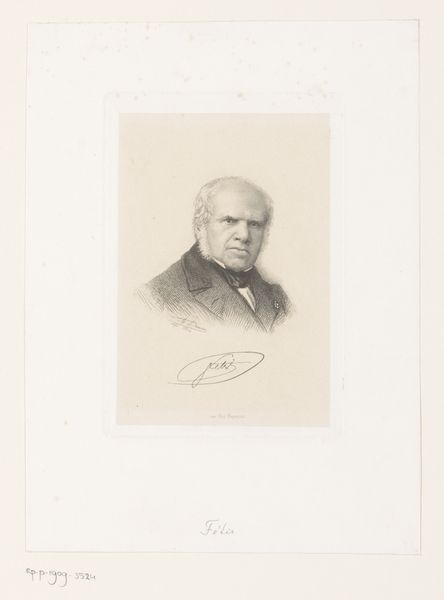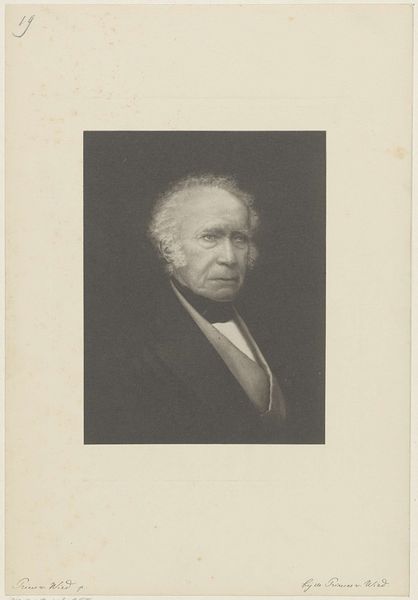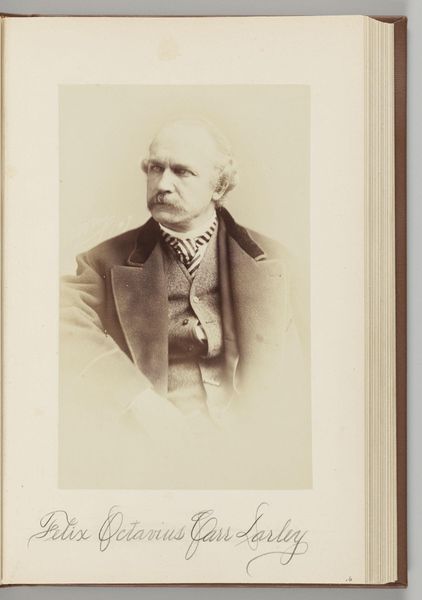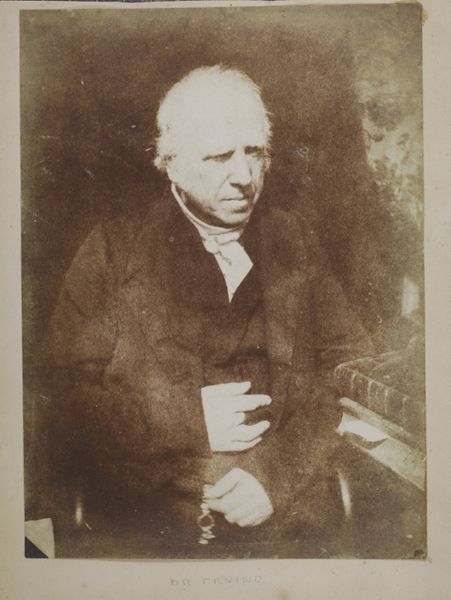
Dimensions: height 469 mm, width 400 mm
Copyright: Rijks Museum: Open Domain
Curator: Here at the Rijksmuseum, we have "Portrait of Alexander von Humboldt" by Paul Sigmund Habelmann, created sometime between 1833 and 1890. It's a neoclassical print, rendering Humboldt with striking precision. Editor: My immediate impression is one of serene authority. The lighting is masterfully controlled to accentuate his features. The textures feel almost tangible—the crispness of his collar against the softer wool of his coat. Curator: Indeed. Humboldt was a monumental figure, influencing scientific and intellectual circles across Europe and the Americas. Habelmann's portrait encapsulates his social standing and legacy during an era that idealized reason and empirical observation. It presents him not just as a scientist but as an embodiment of Enlightenment ideals. Editor: And it's carefully constructed, wouldn’t you agree? The composition seems to rely heavily on geometric balance—a deliberate symmetry. Note how his gaze locks with the viewer, conveying a sense of intellectual dominance. This visual language, so precisely executed in the print, contributes enormously to the imposing image. Curator: Absolutely. Prints like this also served to democratize imagery, making the visages of prominent individuals accessible to a broader audience. Think of it in terms of the growth of nationalism, public knowledge. This portrait participates in constructing Humboldt as a national hero and a figure of scholarly virtue, all enabled by the mechanics of reproduction and distribution. Editor: Yes, the interplay of light and shadow here feels very considered, directing the viewer’s eye to those very signals. His piercing eyes, the distinguished attire. The whole arrangement works to reinforce a singular interpretation. I can’t help but wonder what expressive avenues a painter might have chosen over the sharp precision we see rendered by this printmaking technique. Curator: Perhaps, but Habelmann's work provides a tangible glimpse into the power dynamics and image construction of the 19th century. The success and wide circulation of such prints helped propagate and entrench social narratives. Editor: It leaves me considering the visual encoding of influence itself and how this portrait masterfully delivers a portrait that echoes authority through the ages. Curator: Exactly, this portrait is far more than an image. It's a mirror reflecting its own society's aspirations and ideals.
Comments
No comments
Be the first to comment and join the conversation on the ultimate creative platform.
